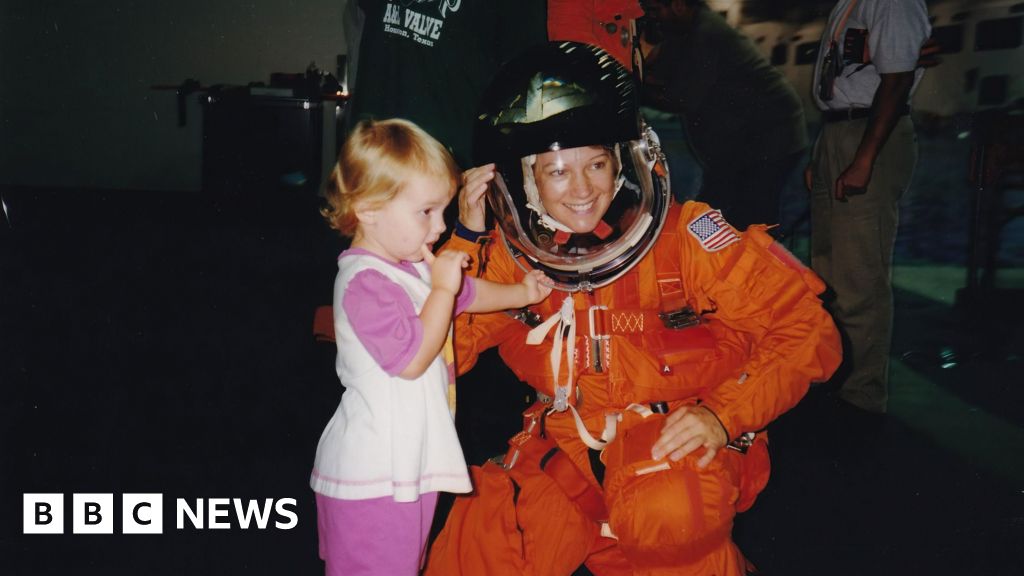Eileen Collins is a pioneering astronaut who broke through one of the toughest glass ceilings in history by becoming the first woman to pilot and later command a NASA spacecraft. Despite her groundbreaking achievements, her name remains relatively unknown outside of space and science circles. A new feature-length documentary titled *Spacewoman* aims to change that by chronicling her remarkable career and the legacy she has built.
The film introduces Collins during a visit to London’s Science Museum, where she comes across as warm, softly spoken, and grounded. Yet beneath her calm demeanor lies a steely determination and intense focus. Collins traces her inspiration back to childhood, recalling a magazine article about the Gemini astronauts she read when she was about nine years old. “That’s the coolest thing. That’s what I want to do,” she thought. At that time, there were no women astronauts, but young Eileen simply decided, “I’ll be a lady astronaut.” Her ambitions didn’t stop there; she wanted to be at the controls of a spacecraft.
Collins’s path to the cockpit was unconventional but deliberate. To become a spacecraft pilot, she knew joining the military and becoming a test pilot was essential. In the U.S. Air Force, she distinguished herself and was eventually selected to join NASA’s astronaut program. NASA’s Space Shuttles, reusable winged spacecraft often described as “space planes,” were the vehicles she would learn to fly. When she launched on her first mission in 1995, the eyes of the world were on her. As the first woman to pilot the Space Shuttle, she felt the immense pressure to perform flawlessly. “I didn’t want people to say, ‘Oh look, the woman has made a mistake,’” Collins explained. She recognized that her performance would shape the reputation of women pilots who came after her, and she wanted that reputation to be excellent.
Collins’s skill and leadership quickly earned her a promotion to commander — another historic first for a woman. Her achievements came while balancing life as a working wife and mother of two young children. This aspect of her life often became a topic during press conferences, with journalists sometimes expressing surprise that she could manage both demanding roles. Collins, however, considered being a mother and a commander as “the two best jobs in the world.” She even joked that parenting was harder than commanding a Space Shuttle. “The best training I ever had for being a commander was being a parent — because you have to learn how to say no to people.”
Throughout Collins’s career, NASA’s Space Shuttle program experienced both incredible triumphs and tragic disasters. The Challenger shuttle exploded shortly after launch in 1986, killing all seven crew members, and in 2003, the Columbia shuttle disintegrated during re-entry, also killing its entire crew. The Columbia tragedy was caused by a piece of insulating foam breaking off the shuttle’s fuel tank during launch, damaging the heat shield and leading to the catastrophic failure on re-entry.
Collins vividly recalls the Columbia disaster and the friends she lost. Yet, as a commander, she had to carry on with the missions that followed. She was slated to command the next shuttle flight after Columbia’s loss. When asked if she ever considered quitting after such a tragedy, she said no. “People throughout the shuttle program were counting on the commander to stick with it,” she said. “Quitting the mission would have been the opposite of brave… I wanted to be a brave leader. I wanted to be a confident leader. I wanted to instill that confidence in other people.”
In 2005, when Collins’s final mission launched, history seemed to threaten to repeat itself. Once again, a chunk of foam broke loose during launch. But this time, NASA had a plan to assess and manage the risk. Collins had to pilot the shuttle through a risky 360-degree flip maneuver beneath the International Space Station. This allowed astronauts aboard the station to photograph the shuttle’s underside to inspect for heat shield damage. Despite engineers and managers warning that the maneuver was too dangerous, Collins calmly made the decision to proceed. Her steady hands at the controls and calm voice with mission control guided the shuttle through the slow, graceful somersault. The damage was identified, and a spacewalk was conducted to repair the shuttle, enabling Collins and her crew to return safely to Earth.
That flight marked the end of Collins’s time in space. She had always planned to retire after her fourth mission to allow others the chance to fly. Since

